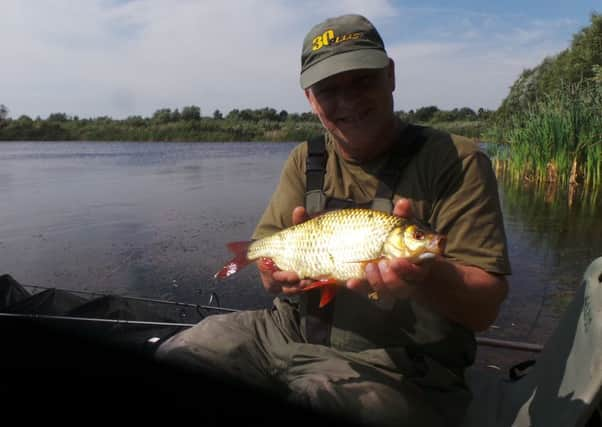Angling expert Alan's top tips on catching big Rudd


As they mature (within 3-4 years) their colouring becomes more bronze.
They’re prolific breeders and can live for up to 17 years so once in a water they can populate it very quickly and are often in such numbers that they become a nuisance when you’re trying to catch bigger species.
Advertisement
Hide AdAdvertisement
Hide AdRudd are not the biggest of species so anything over the 1lb mark is a worthy catch and a 2lb fish would be considered a specimen.
There is a big jump from a specimen to the present record, which stands at 4lb 10oz. This record fish fell to Simon Parry back in 2001 and came from Clay Lake in County Armagh, Ireland.
I’ve caught rudd to over 2lb and I can tell you it’s hard to imagine one more than twice this size.
This record is likely to stand for some time but big rudd are not as rare as you might think. Roach are generally considered to be of a bigger average size than rudd so you might be surprised to know that the roach record is actually 6oz below the rudd record.
Advertisement
Hide AdAdvertisement
Hide AdThey spend most of their time in the shallows and are most active in the warmer months but can be caught all year round.
In the winter they head for deeper water and are less active but can still be tempted to feed so they offer some good winter sport.
Methods
Just about any method will catch rudd. In fact catching small rudd is relatively easy and you can get away with using rather crude rigs.
Fishing shallow with maggots, casters, chopped worm or bread will get you catching them in numbers without too much effort.
Advertisement
Hide AdAdvertisement
Hide AdYou could scale your rig right down and use blood worm, which is also an excellent bait and in the Autumn they’ll go crazy for floating bread.
Fly fishing with tiny dry (surface) flies is an exciting way of catching rudd too. However, as with all specimen fishing, it’s all about knowing how to adapt your approach to specifically target the bigger fish.
Rudd are designed to be surface feeders so a light approach with a slow-sinking bait will catch you plenty of fish but they’re likely to be small and the chances of getting past these ‘bits’ are not good.
You could feed in a pinch of hemp each cast to try and feed the smaller ones off but this can often prove impossible.
Advertisement
Hide AdAdvertisement
Hide AdAnother way is to fish literally a foot deep and get the fish competing for food in the hope that the bigger ones bully their way to the surface where the feed is entering the water. That can often prove futile too.
There is however, a more successful way of being more selective. Rudd have relatively little mouths so the easiest way to be more selective is to use a bait that the smaller fish simply cannot get into their mouths.
I’ve found that the best bait for this by far is the humble sweetcorn. It can be a waiting game for the really big specimens but if you use a small grain of corn, the smaller rudd may nibble at it but only the catch-worthy sized fish will be able to take the bait properly.
Rather than use a very delicate float, when specifically targeting big rudd I prefer to use a bodied insert waggler around 3BB in size and have the tip standing at least an inch out of the water.